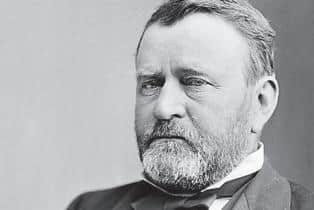When tragedy struck the day American president and American Civil War hero Ulysses S Grant visited South Tyneside


It was a far cry from the battlefield of Shiloh and the other killing grounds of the Union versus the Confederates.
To the folk of what is now South Tyneside the American Civil War must have seemed distant yet still thrilling as it played out across avidly read newspaper columns in the 1860s.
Advertisement
Hide AdAdvertisement
Hide AdSo when a decade later a hero of the conflict – and a former American President to boot – stepped ashore at Jarrow, it should have been a red letter day.


Yet the visit of General Ulysses S Grant, 18th President of the US, who had worked alongside Abraham Lincoln to help the Union Army to victory over the Confederacy, would be remembered for all the wrong reasons.
For the Mid-Tyne community, it would come to be overshadowed by terrible tragedy.
Grant’s visit to Tyneside in the late summer of 1877 is one of those episodes that you look at slightly askance that it could have happened, although it is well documented.
Advertisement
Hide AdAdvertisement
Hide AdAfter his term as president, he had embarked on a two-year world tour which brought him to the UK and to Tyneside, where he met up with, among others, representatives of the Council of the Iron and Steel Institute and industrialist Sir William Armstrong, whose works here had supplied armaments during the Civil War.
Grant came by boat down the Tyne, his ultimate destination Tynemouth. En route, it was arranged that he would step ashore at Jarrow for a few minutes, where he would be received by the Mayor and other dignitaries.
Some Jarrow folk, though, had things on their mind that day, other than greeting an American VIP.
A stretch of road in the town, between Tyne Street to the Curlew Chemical Factory, had been laid over the site of an old pit heap.
Advertisement
Hide AdAdvertisement
Hide AdPeople had become used to collecting coal from the side of the thoroughfare, to the extent that a large cavity had been created under the road itself.
It seems that, despite warnings from a passer-by that it was dangerous, eight children had been digging inside this cavity when it collapsed, burying them.
Only three got out alive, of whom one died later.
The children who lost their lives in the tragedy included an 11-year-old boy called Mahoney, another called Murray, who was 16, and a 12-year-old girl, Elizabeth Stockman. All three lived in nearby Pearson Place.
Also killed were Margaret Reilly, 12, of Walter Street, and 15-year-old Jane Hoey, who lived nearby with her widowed mother.
Advertisement
Hide AdAdvertisement
Hide AdA seven-year-old boy, John Farrell, also died, his sister, Mary Ann, being left fighting for her life.
Folk descended on the terrible scene from all over Jarrow.
Wrote a commentator: “The calamity has cast a sad gloom over the town, the more so as the cheers at General Grant’s reception at Jarrow landing had scarcely died away, ere the wail of anguish was heard for the lost little ones.”
Support your Gazette and become a subscriber today. Enjoy unlimited access to local news, the latest football stories and new puzzles every day. With a digital subscription, you can see fewer ads, enjoy faster load times, and get access to exclusive newsletters and content. Click here to subscribe.